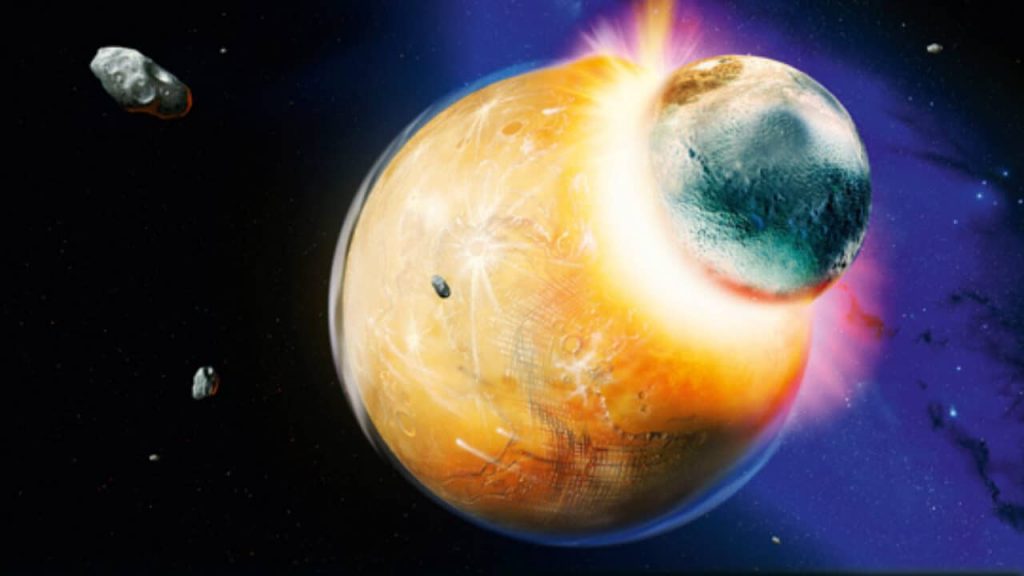As antagonist of the sun, the moon is the natural satellite of the earth, whose influence and meaning is just as important. The moon is a space object that dates back more than 4.000 million years, almost as long as the Solar System.
Everything that revolves around the concept of the moon is enriching in terms of science, culture and mysticism. The moon is constantly studied, even hosting different space missions, such as the Apollo mission.
However, from a point of view apart from science, the moon has several meanings. In short, it is a valuable object of interest, which, day after day, is responsible for decorating the nights. Therefore, have you ever wondered, what is the origin of the moon?
You may also be interested in our article: 3 Mysterious Giant Stars of the Universe Bigger Than the Sun!
The origin of the moon, in a nutshell. What are the most basic details?
More than 4.000 billion years ago, the Solar System and the universe were pristine. Everything that is currently known, as basic as it may seem, was not even the same in dimensions during that time.
La scientific magazine Icarus, in the year 1975, published a summary of what was exposed in the international scientific conference on satellites of the previous year. From that moment on, the most successful theory was revealed about the origin of the moon.

Source: C&EN
In it, it was established that, after an event of catastrophic proportions, the Earth suffered a huge impact. Back then, its size was barely half of what it is today, causing ferocious damage.
The object that caused such an event, It had dimensions similar to Mars. causing the release of fragments and terrestrial material. As a consequence, as time passed, the debris accumulated, causing the origin of the moon.
The protagonists of the origin of the moon, according to the most successful theory
To further understand the details mentioned above, it is important to know the protagonists of the origin of the moon. In the first instance, as already mentioned, the newly born planet Earth is found.
On the other hand, the neglect of a sister planet, named Tea, is the main antagonist of the premise. It was thanks to this planet, according to various hypotheses, that it is possible to explain today the origin of the moon.
The main antagonist: Theia
Also known as Tea or even Orpheus or Orfeo, it is the celestial object that is believed to have hit the Earth millennia ago. Tea, was a planet that originated close to the same Earth orbit, with a smaller size in comparison.
However, he grew up in an orbital zone more prone to planetary growth, due to the different characteristics of the medium. Once the planet reached Mars-like proportions, it began to show negation because of the orbit it inhabited.
As a consequence, Tea underwent frequent orbital changes, leading to unstable behavior. In the end, her trajectory became too chaotic, resulting in a direct hit with respect to Earth.
Supporting Actor: Planet Earth
More than 4.000 million years ago, the planet Earth was just a young rocky mass, practically embryonic. For that historical moment, it is believed that the Earth barely passed through the differentiation process between the mantle and the core.
Once the shock occurred, Tea was almost completely destroyed, while the Earth was plunged into a hostile and inhospitable environment. Surface temperatures reached ridiculous levels of heat.
Much of Tea's mantle and surface, together with a small percentage of the Earth's mantle, was issued. As the event happened in a random way, Tea followed her orbit forward.
Being practically the same Earth orbit, a second impact occurred, triggering the total destruction of Tea. With this new debris ejection of matter into space, the Earth developed its own debris disk.
However, due to different effects not yet explained, the debris disk compacted and formed the moon. In contrast, the rest of the debris from Tea is believed to have merged with the terrestrial structure, fortifying it.
The arrival of man on the moon
When man stepped on the moon, it not only meant a giant step for humanity. Also, he represented the opportunity to come into contact with one of the most enigmatic elements of the nearby cosmos, the moon.
The material collected during the Apollo mission, They were able to verify some evidence that reinforces the impact theory. The first and most outstanding is that the moon, among its materials, has a coefficient of oxygen isotopes similar to the Earth.
In turn, it has been concluded that the lunar core and surface are made of materials resulting from the fusion of two surfaces. By virtue of this, it is believed that both elements of the Earth and the planet that caused the impact are present on the moon.
Other theories that explain the origin of the moon. What else should you know about it?
From the hypothesis of the impact or the great collision there are other theories that explain the origin of the moon as such. One of them is the synesis hypothesis, postulated in 2018 by scientists from Harvard and UC Davis.
This phenomenon establishes that, after a planetary impact event, the end result is a huge solid rock known as synesis. Materials such as metal, granite or compact rock form this huge mass that is also hot. Over time, it was reduced to the dimensions that correspond to the moon.

Source: QUO
However, the next of other theories explaining the origin of the moon was promulgated in 2012. An article published by R. Canup established that the moon originated as a result of the merger of two planets after a collision.
Both planets had proportions equal to or greater than the planet Mars, unleashing a cloud of cosmic debris. First, this cloud was organized in the form of a biconcave disk, which later compacted and formed the moon.